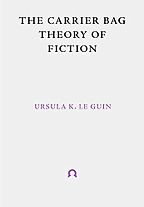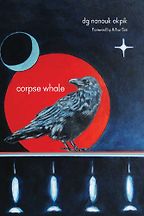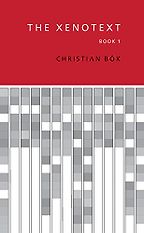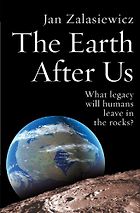Before we discuss your selection of books on the deep future, I wanted to first ask: why did you write a book ‘in search of future fossils’?
Because the climate emergency doesn’t just affect those of us alive now; it reaches into the lives of generations who have yet to be born. Sea level rise is a slow process that will take many hundreds of years; the last trace of our carbon won’t be weathered from the atmosphere for perhaps one hundred millennia. There’s a deep time dimension to so many of these strange and urgent planetary changes—such as the 100-year storms that now arrive annually, or heatwaves in the Arctic—but it seemed to me we weren’t fully grasping this. I wanted to find out what traces we will leave for the deep future, whether this is 10,000 or 100 million years from now. Really, Footprints is about how we want to be remembered.
“Literature’s role will be what it has always been: to sustain, encourage, and provide new vision.”
We’re actors in deep time now, but this is a very difficult thing to imagine—there’s nothing in our experience we can measure it against. John McPhee suggests we can think of the age of the Earth as the old English yard, the distance from the king’s nose to his outstretched fingertip, and human history as the finest paring of a fingernail. It’s a brilliant and vivid image, but perhaps not directly connected to how we live right now. The future fossil is a way to make deep time more of a tangible presence in everyday life. So many of the things we are surrounded with—such as our cities of concrete and steel, filled with plastic and glass—have the potential to become a fossil presence in the rock record. Not all of it, of course, but the sheer quantity means it’s inevitable there will be some trace of how we lived. So I began to think of future fossils in terms of the stories they will tell—as stories themselves, of a kind, that we’re telling to those who will follow us. They’re a glimpse of our planetary legacy, and so an opportunity to take hold of what we want that legacy to be.
Please tell us about some of the future fossils you ‘discovered’—or inferred—and how considering them helps us understand our place and what we need to do.
I visited Shanghai to better imagine how a megacity might become a fossil; walked across the bridges over the Firth of Forth to imagine what will be the future presence of the 50 million kilometers of roads we’ve wrapped around the Earth; and descended to the bottom of a nuclear waste storage facility in Finland, nearly 500 meters deep in the bedrock. ‘Seeing’ the future fossil in each place was, in one sense, an act of imagination. But it also felt very much that the deep future was right there, immediately available. The great physicality of Shanghai, with its vast towers pressed deep into the ground, made its fossil future very real. In the almost sacred, underground hush of Onkalo, where Finland’s nuclear waste will be kept safe from intrusion by a curious future visitor, it was as if that future visitor was at my side.
“Aristotle wrote that enargeia allowed an audience to “see things occuring now, not hear of it as in the future”; Alice Oswald translates it as “bright unbearable reality””
So, ‘what will be left of how we lived?’ was the first question animating Footprints. But I wanted to know what will be lost. In a laboratory in Tasmania I held a core of ice drawn from Antarctica—the world’s ice is an immense library of climate history, archived in tiny bubbles that record what the atmosphere was like thousands of years ago. The loss of ice is also a loss of planetary memory. And I swam over the Great Barrier Reef, which at the time was recovering from a mass bleaching event, and is currently experiencing another one. Coral reefs are present in only a tiny fraction of the oceans, but they are home to a quarter of all marine life. If the seas become too hot and acid for coral to live in, an unimaginable train of loss will follow—all of it legible, in the future, as a ‘fossil gap.’
Early in Footprints, and at its very end, you write of moments when a flash of enargeia breaks in on the present. Could you say something about that?
Aristotle wrote that enargeia allowed an audience to “see things occuring now, not hear of it as in the future”; Alice Oswald translates it as “bright unbearable reality.” In Footprints it describes those moments when the deep future flashes on the present or when the future fossil is visible in an everyday object. Enargeia is a form of ethical seeing.
Five Books interviews are expensive to produce. If you're enjoying this interview, please support us by donating a small amount.
Robert Macfarlane once suggested, qualifying Philip Larkin, “what will survive of us is plastic, swine bones, and lead-207.” This is true, but that’s not to say love won’t play a part. Many of our future fossils will tell very clearly not just how we lived, but what we valued. That’s why I think they offer an opportunity. If we arrest or ameliorate the decline in biodiversity, that will show as a story of care in the fossil record. If we store our nuclear waste so that it does transform safely into lead without harming future generations, there’s a kind of love there also.
You have compiled a deep time reading list on Twitter. I must say I found it absolutely fascinating. Could you say something about some of the highlights on that list?
Thanks! I’m glad you enjoyed it. Roy Fisher’s poem ‘Staffordshire Red’ was first on the list; for me, it’s one of the most beautiful expressions of how we always inhabit the flow of deep time. He writes of driving through a rock cutting, and being transported to another age: “Some things / are lying in wait in the world / … / happening when touched, as they must.” Other entries were important in Footprints, like Italo Calvino’s Invisible Cities, which accompanied me round Shanghai, or Borges’ ‘The Library of Babel,’ which is a literary counterpoint to my chapter on ice. I’d like to highlight, too, Kathy Jetnil-Kijiner’s amazing video poem, ‘Anointed,’ about the mythic legacies of nuclear testing in the Pacific. In the video, she courageously performs the poem stood on top of ‘the tomb,’ a concrete dome on Runit island covering 85,000 cubic metres of radioactive topsoil.
Let’s talk about your first choice, Ursula Le Guin’s The Carrier Bag Theory of Fiction. I guess she didn’t have plastic in mind! Why ‘fiction’? Aren’t you writing about ‘facts’?
Yes, inasmuch as what we can say about future fossils is based on observations of material properties. But it’s the eloquence of those materials that really interests me, the ‘storied’ element of matter. Le Guin’s starting point is the theory of an archaeologist, Elizabeth Fisher, that the first made thing wasn’t a weapon (as in Kubrick’s 2001) or a tool like a hand axe, but a vessel. Le Guin says, “before the tool that forces energy outward, we made the tool that brings energy home.” With the first vessel, our ancestors would have broken open time and space. They weren’t limited to the here and now any longer; instead, they could carry what they needed away from the forest or the river to use elsewhere, on another occasion.
Get the weekly Five Books newsletter
Stories, Le Guin suggests, do the same thing. They’re vessels for the imagination, and they release us from the here and now, into other other times and places. No one can say for sure which came first, the bag or the story, but it’s remarkable to think that, either way, our first technology was a form of time travel. Gaia Vince writes about this in Transcendence, how storytelling provided our ancestors with both a means to deposit information and a predictive tool. It carried us backwards and forwards in time.
Le Guin’s essay speaks to me about how plastic often appears to us as ‘unstoried matter,’ existing only in the moment we use it, when in fact the opposite is true. Unlike the grain of wood or the polish of steel, plastic doesn’t disclose its origins. But it’s also rich in stories that reach back into the deep past of slow-forming hydrocarbon deposits and, because it’s so durable, forward into the far future. Any plastic bag or bottle is a vessel not just for what we happen to store in it, but for stories that can carry us through deep time.
Le Guin was a prolific imaginer of other worlds. What do you see as the long term role for literature?
I think literature’s role will be what it has always been: to sustain, encourage, and provide new vision. We learn to know ourselves through stories, whatever form they take, we always have.
Your second choice is The Earth After Us by the geologist Jan Zalasiewicz. This book was a good starting point for you, I think?
Indeed! I’m not a geologist, so The Earth After Us and the many articles Zalasiewicz has produced as part of the Anthropocene Working Group were invaluable to me, in giving a material basis for the future fossils I was interested in. He walks the reader through the processes that would lead, for example, to a city leaving a fossil layer, what he calls the “urban stratum,” which an alien visitor could discover 100 millions years from now. It’s a pretty wild read, but hugely informative. It changed the way I see the world and our role in shaping it. Virginia Woolf said, “we live in things,” and Zalasiewicz shows how this will be so long after we’re gone. He coins the term ‘technofossils’ to describe the huge variety and quantities of made things, from Bic pens to metal alloys, that have the potential to leave a lasting impression. As chair of the AWG, Zalasiewicz has been a kind of spokesperson for the emerging concept of the Anthropocene, and I think we’re extremely fortunate to have such a graceful writer perform this role.
What does the ‘Anthropocene’ mean to you, and why is it a helpful concept to have?
‘The Anthropocene’ has attracted a lot of criticism, mostly that it fails to accurately name the problem—is that it isn’t humans per se that cause climate change, it’s certain human societies choosing to organise themselves in a particular way (i.e. it’s capitalism that’s to blame). And this is absolutely true. But I still believe the Anthropocene is a useful concept, because it provokes us to rethink our relationship with deep time. The AWG’s task is to establish whether there will be enough clear and widespread evidence of human civilisations in the geologic record to mark a boundary between stages in Earth history. Previously, these boundaries have been marked by glaciations or extinctions. Which is to say, the Anthropocene identifies us with processes that unfold over very deep time. There’s a radical and vital re-visioning that follows from this, which I hope is a step towards learning to be better ancestors.
Your third choice is Corpse Whale by dg nanouk okpik. Please tell us about this collection.
okpik is an Inupiaq poet, from Alaska. Much of the story of our impact on the deep future is being written in the far north, through the extraction of fossil fuels and the warming of the Arctic. But for indigenous communities that future is their past. The indigenous scholar Kyle Powys Whyte says that indigenous populations “already inhabit what our ancestors would have understood as a dystopian future.” The Anthropocene is, after all, a legacy of colonialism. And it perpetuates colonialism too—what else could you call it, when lifestyles in developed nations depend on ravaging the Niger Delta and Alberta’s Tar Sands in search of cheap fuel, and exporting the greatest cost of burning it to Bangladesh and the Marshall Islands, for whom sea level rise is an existential threat?
“The Anthropocene is, after all, a legacy of colonialism”
For all this, the poems in Corpse Whale are full of the richness of Inupiaq culture and myth, and the rhythms of Arctic life. Perhaps most importantly of all, they challenge the worldview that sets humans apart from the rest of the world. okpik uses a form of split pronoun—“She/I dream/s in flight with falcon / She/I glide/s in an Inuit ice shelf”—which is disorienting at first, but gradually produces this shift in your attention, where the ‘I’ speaking becomes inextricable from the surrounding world. The notion of shared personhood is a core element in much indigenous thinking, including Inupiaq culture. ‘Inupiaq’ means “real people,” and at one point, okpik even observes that “oil is a people,” which transforms it from a simple resource to an entity we share the world with. The poems are also very dynamic, visually—full of breaks between phrases, and sudden changes in register and reference. They offer what the poet Lyn Hejinian calls an ‘open text,’ that is, “open to the world.”
Yes, I’m struck by the way she telescopes deep time and the immediate moment. She writes, for example of place called Birnirk in the native language but known in English as Point Barrow, which the whites made “a military port of call/for sighting air attacks”, but where “she/I’ve watched the currents, migrations, felt the rough movements/of the ice, which brings feasts, and famine.”
The anthropologist Wade Davis has observed: “The other peoples of the world are not failed attempts at modernity, let alone failed attempts to be us. They are unique expressions of the human imagination and heart, unique answers to a fundamental question: what does it mean to be human and alive?”
okpik’s is a cosmology that non-indigenous readers can’t just step into, but I think we can learn from it. To borrow a phrase from Robin Wall Kimmerer, her poems are “born of long intimacy and attentiveness to a homeland.” She’s immersed in ways of telling time that are the product of thousands of years of continuous culture in a hugely challenging landscape. (Corpse Whale is arranged as a kind of calendar of the Inupiaq year.) In this way of looking at things, the temporalities of oil extraction or geopolitics seem deeply strange, a kind of temporal ostranenie (defamiliarisation). It’s good, I think, to learn that there are other ways of being in time.
Your fourth choice takes us back two and half thousand years. Why is an ancient tragedy about an incestuous murderer on your list?
Sophocles’ Oedipus at Colonus is essentially about a struggle for “power over tomorrow.” Having spent years wandering in disgrace and near to death, Oedipus—whose “griefs exceed / the griefs of all mankind”—arrives on the outskirts of Athens. What follows is a struggle over his remains between Creon, the king of Thebes who replaced Oedipus, and Theseus, king of Athens. Creon wants to install the tomb outside his city as a kind of talisman which he believes will confer protection. But Oedipus insists that in death he would only bring “vengeance / rooted deep in your soil for all time to come,” and appeals to Theseus to bury him in secret. In return, he says, the power that would curse Thebes will be “the root of all your greatness, everlasting, ever-new.”
Get the weekly Five Books newsletter
So Oedipus, who represents “the power that age cannot destroy,” becomes a source of fascination. The parallel, for me, is with debates about safe storage of nuclear waste. There’s a real risk that anything we do to signal the danger of spent nuclear fuel will be lost on future generations, and instead be mistaken for treasure (think of the ineffective curses guarding the Pharoah’s tombs). In Footprints, I explore various incredible schemes designed to keep the waste safe from intrusion for 10,000 years. Perhaps the most fantastical was the semiotician Thomas Sebeok’s proposal for a ‘nuclear priesthood,’ responsible for conveying sacred knowledge about nuclear waste to future generations. Sophocles even seems to have anticipated this, when he has Oedipus instruct Theseus to only reveal the secret location of his tomb “to your eldest, dearest son, / and then let him reveal them to his heir / and so on through the generations, forever.”
There’s hope of a good future in the play but also a warning against hubris. Oedipus does end up in the care of the Athenians, rather than rapacious Creon. And yet by the time the play was first performed in 401 BCE, five years after Sophocles’ death, Athens had fallen.
Based on what one can infer from looking back, and what we know today, what kind of messages, signals and symbols do you think could most likely carry enduring meaning in the far future?
Well, it’s likely there will be issues of translation. One of the problems of communicating the risks associated with nuclear waste is that all languages have a half-life. 10,000 years from now, perhaps a tenth of English words will still be current (if English is still spoken at all).
Still, art has the capacity to communicate in spite of this. I was really enthralled by the announcement, late last year, of the discovery of the world’s oldest narrative art, painted on the wall of a limestone cave in Indonesia nearly 44,000 years ago. It shows thin, red-ochre stick figures hunting dwarf buffalo and wild pig. But some of the figures have animal traits—a bird’s head or a tail—which suggests that it’s a myth rather than the record of a real hunt. Or rather, that it’s a hunt that only took place in the imagination.
We’ll never know what the myth was, but perhaps more powerfully we can still read in the painting the strength of the connection the artist felt with the animals she was depicting—so close, some were melded with human forms. That’s a message that ought to transcend time, I think.
Your final choice may prove to be the longest enduring work of art ever created—with the possible exception of those recorded on the Voyager Golden Records, I suppose. Please tell us about The Xenotext, and why you chose it.
Christian Bök’s Xenotext project is an attempt to write an eternal poem, one that will survive in the DNA of extremophile bacteria when all other life on the planet is extinguished.
Christian wrote a pair of mutually-enciphered sonnets, ‘Orpheus’ and ‘Eurydice,’ so that either poem can be translated as the other using a cipher he called ‘ANY-THE’—so, “oh stay / my lyre” in ‘Orpheus’ becomes “in fate / we rely” in Eurydice’s corresponding lament. He then assigned each letter of the alphabet to a codon of DNA (combinations of three of the four nucleobases, adenine (A), cytosine (C), guanine (G), and thymine (T)), so that he could encode ‘Orpheus’ in the genome of d.radiodurans, an extremophile that so far scientists have been unable to kill. It can withstand more than 1000 times the lethal dose of gamma radiation for humans. In 2002, NASA sent it into space where it was directly exposed to solar radiation, but the sample returned alive. Christian’s intention was to exploit RNA inscription to produce his eternal poem: once ‘Orpheus’ is encoded in d.radiodurans’ DNA, the bacterium will produce a protein that can be extracted and decoded to produce ‘Eurydice.’ The idea is that, because it can’t be killed, d.radiodurans will be host to the lament of Orpheus and Eurydice for eternity.
I just find it such a compelling idea, that the last trace of human life to exist on the planet would be a pair of poems, recalling one of the world’s greatest love stories, woven into the life of this fearsome microbe. So far as I know, to date Christian has been able to successfully introduce ‘Orpheus’ into the genome of d.radiodurans, but not to retrieve Eurydice. As in the myth, she continues to fall back into darkness. But to be honest, this failure doesn’t matter to me. It’s such a mind-expanding idea, for one thing. But it also makes me feel more hopeful about the deep future. There’s hope in the thought that our last trace is still unmade. The story of our mark on deep time hasn’t yet been fully told. There’s time, still, to decide how we want to be remembered.
Five Books aims to keep its book recommendations and interviews up to date. If you are the interviewee and would like to update your choice of books (or even just what you say about them) please email us at [email protected]












